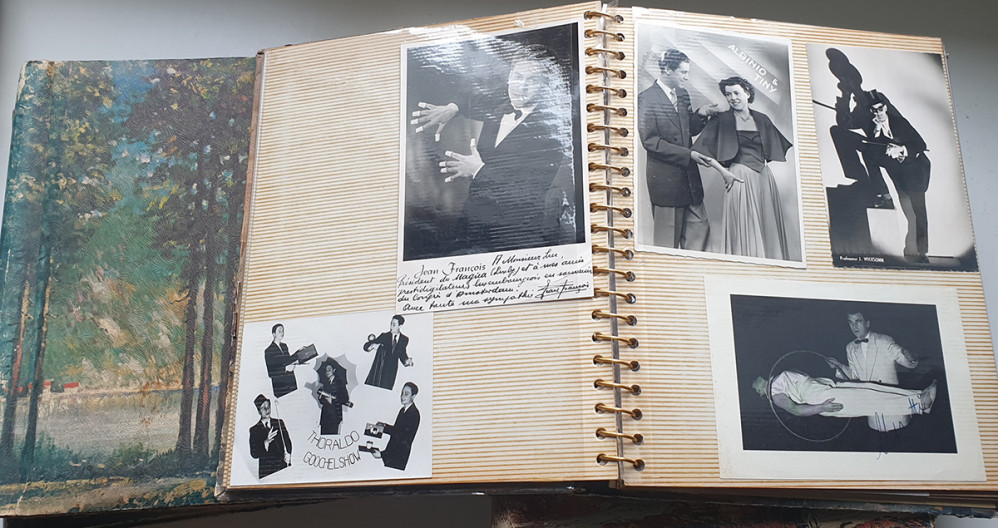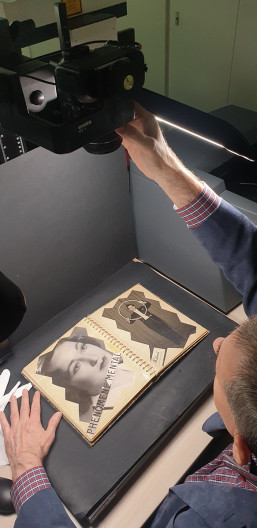In the ever-evolving landscape of knowledge sourcing, Historesch Gesinn has introduced a new tool —the “Identify” feature. The tool was developed to collect information about a selection of photographs of magicians, who performed in Luxembourg in the 1950s and 1960s, and it can be used now for all the collections on the Historesch Gesinn platform. The main advantage is that visitors may identify people, places and objects in the photographs directly and can add information and anecdotes. This new tool enables us to source hidden stories behind the photographs and learn from living memory to enrich the archive material.
Historesch Gesinn is a platform that aims to build a bridge between researchers and the general public. People are invited to learn more about ongoing historical projects at the C²DH in Luxembourg and to contribute to them. As a platform, it connects the C²DH with other institutions that engage with the past, such as the Luxembourg City Museum. It is also a platform for crowdsourcing of images and photographs in the context of ongoing research, as, for example, the impact of deindustrialization in Luxembourg.
Photography is a powerful medium in contemporary history, as it provides insights into the diverse documentation and archiving practices that individuals employ in their personal lives, for this case, particularly the 1950s and 1960s. The fact that a photograph was taken at a time when developing film was still a costly process, selection was driven by an evaluation of the potential future value of the images. The subsequent decision about which photographs were kept and passed on to the next generation, makes photography a particularly rich source of information as it is not only the materiality of the object but also its context.
Exploring a magician’s album
Albums add another layer of context as they are curated collections of photographs that relate to each other and are part of a composition. Albums are designed to tell a story and to illustrate a particular theme or topic.1 In the context of a research project about the Luxembourg funfair “Schueberfouer” in the 1960s, C²DH gained access to five albums containing photographs of magicians and other artists from the 1950s and 1960s, which belong to the Luxembourg based magician club “Magica Club Letzebuerg”. The association has received these albums from one of its founding members and former presidents Roland Peusch. His stage name was Perol and he was a Luxembourgish magician and actor, who was born in the 1940s. Plus, he was a member of the variety programme of the National Lottery and RTL Télé Luxembourg.
The albums compiled by Peusch tell the story of magical performances in Luxembourg and the various events attended by the public. The five albums with self-adhesive cover sheets, popular in the 1960s, are remarkable for their ability to eliminate the need for individual corner gluing. However, a risk of damage arises when attempting to remove the photographs from the album for scanning. It was therefore decided to scan the album pages as they were.
Image capture of this unique collection posed a number of issues, many of which are well known when working with older and fragile photo albums. We carried out an initial inspection and documentation stage, noting the overall condition of the albums, and any remedial action needed before proceeding. Typically you would expect to see wear and tear on the album covers, and faults resulting from long term storage and other conditions from temperature and humidity. This set (for the age) was in good condition.
- 1. See Hägele, Ulrich (ed.), 2023. “Kuratierte Erinnerungen: das Fotoalbum”, Visuelle Kultur. Studien und Materialien, Band 15.
For this specific case we had a mixture of formats on each page; photographs, printed promotion cards from the magic shows and handwritten notes. Glue had originally been applied to stick these items to the pages and then covered in a transparent plastic film. - This film is highly reflective making it unsuitable for standard image capture. So a mixed approach was taken for instance using softer overhead lighting to minimize the opportunity for reflection. For research purposes and ease of viewing, a PDF was generated of each album.
From the albums, we selected fifteen photographs, which stood out. For example, the presence of a photo portrait of the Grande Duchesse in the background would indicate that the photographs was taken on a stage in Luxembourg. To streamline the process and avoid lengthy descriptions, the photographs were extracted from the scanned album pages. This approach, while more efficient, may diminish the experience of viewing an album, even in a digital format.
Revealing identities and memories
The selection of photographs from the albums, which has been published on Historesch Gesin, invites visitors to the platform to react to two questions: Do you know the identity of the person(s) depicted in the photograph? Do you know when and where the photograph was taken or, in the case of a studio photograph, whether they remember seeing this particular magician perform in Luxembourg? The visitors to the website have the opportunity to either identify a person depicted in the photograph or to submit a comment in which they share their knowledge about the person or the occasion. As the “Identify” tool is a new feature, a tutorial video was produced by Sabrina Fiel Abade, who is the student assistant for Historesch Gesinn.
To gain traction from our two target groups - magic historians and the general public - we engaged in their particular forums on social media and mailing lists. The Historesch Gesinn platform is multilingual, which facilitates outreach to the various language communities. Once an identification is received, an update is added to the description of the photographs and questions were adapted to facilitate further engagement.
The response rate in terms of liking the Facebook post was positive, but has not yet revealed any concrete information about the location where the photographs were taken. We received already more than ten responses that helped to identify and confirm the identity of several magicians, as well as direct messages on social media posts or directly by email.
We now invite you to visit the “Magica” collection. Perhaps you will discover somebody you have seen perform?








